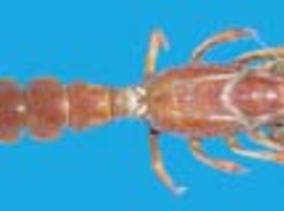You are here
Flora and Fauna
Thalassina anomola
SUMMARY
Rostrum without teeth, eyes small, carapace less than ⅓ of total body length, the chelipeds are asymmetrical and subchelate (the moveable finger is longer than the fixed), and abdomen long and narrow.
Colour: uniformly reddish brown.
Thalassina anomala is known as the mud lobster but is referred to in Thailand as Mae hop. In Ranong it is found in the mangrove area where it burrows down to nearly 3m and the excavated mud forms a mound over the opening. Burrowing activity takes place at night and it is important to the mangrove ecosystem because the lobster recycles nutrients from deep underground. Several additional species are associated with the mounds including Episesarma singaporense (the mangrove crab which facultatively climbs trees) and Wolffogebia phuketensis (mud shrimp). This species is rarely seen out of its burrow, not even at night although it has been observed walking between burrows after heavy rainfall. Thalassina anomala is a mud feeder. In Thailand it is not consumed commercially but is considered to have medicinal properties against asthma. However although not large, this animal is regarded as pest in Thailand, because its burrowing actives can cause problems for prawn/fish farmers in the artificial ponds as their tunnels damage bunds. Their activities also damage earth roads.


